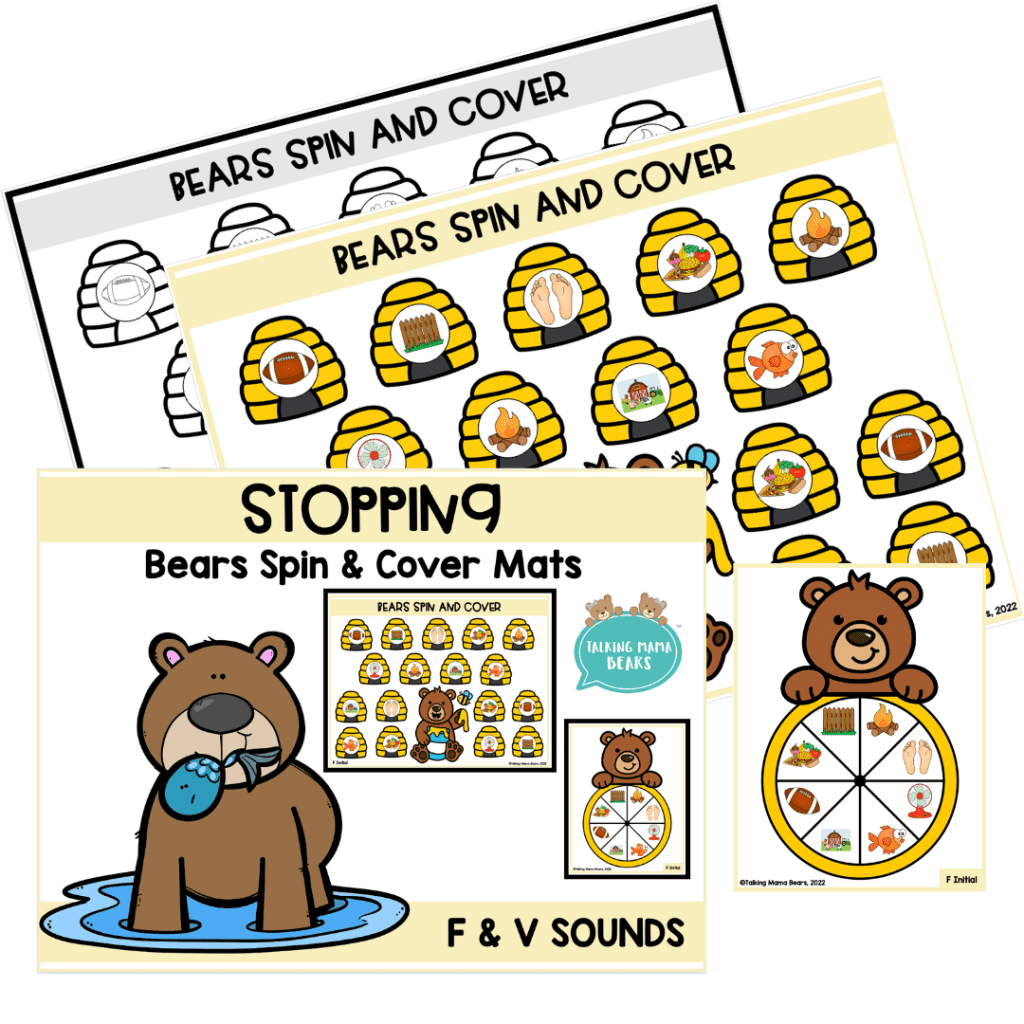This post may contain affiliate links, meaning we get a commission at no cost to you if you decide to make a purchase. As an Amazon Associate, we earn a small commission on qualifying purchases.
We have another round up of tips and tricks for the phonological process of stopping to make your speech and language activities a “show stopper”! From cues and prompts to a freebie spin and cover stopping game, we have you covered to help your students eliminate the phonological process of stopping.
And don’t miss our other posts on additional phonological processes: fronting, cluster reduction, gliding, and final consonant deletion!
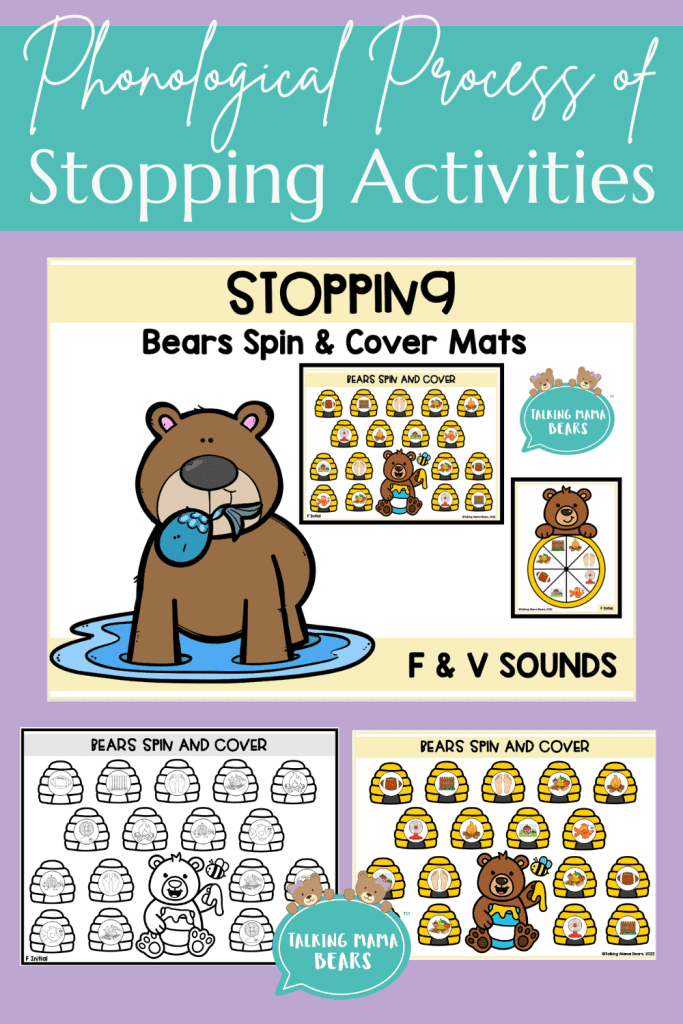
What Is Stopping?
The phonological process of stopping occurs when a child replaces a fricative (such as /f/ or /s/) and/or an affricate (such as /ch/ or /j/) with a stop (such as /t/ or /p/). For example, a child may say “tun” instead of “sun”. This error pattern usually develops between the ages 3-5 greatly improves overall intelligibility.
Minimal Pairs
A great way to target stopping errors is minimal pairs. When using sound contrasts, students can explicitly hear a word meaning change with one sound substitution. For example, a student may say “map” instead of “math”. Especially when paired with a visual, students can very quickly see and hear their error.
Using minimal pairs or sound contrasts can be very beneficial for students and accelerate progress. Check out the list below to see some more stopping errors by phoneme.
P Vs. F Minimal Pairs
- Pig/Fig
- Pin/Fin
- Paint/Faint
- Pine/Fine
- Peel/Feel
- Pat/Fat
- Pair/Fair
- Pile/File
- Pit/Fit
T Vs. S Minimal Pairs
- Tea/Sea
- Toe/Sew
- Two/Sue
- Tail/Sail
- Tent/Cent
- Tack/Sack
- Tick/Sick
- Tell/Sell
T Vs. SH Minimal Pairs
- Two/Shoe
- Tape/Shape
- Top/Shop
- Tore/Shore
- Tell/Shell
- Tower/Shower
- Tip/Ship
T Vs. CH Minimal Pairs
- Tip/Chip
- Top/Chop
- Talk/Chalk
- Tick/Chick
- Two/Chew
- Tin/Chin
- Test/Chest
T Vs. Voiceless TH Minimal Pairs
- Tick/Thick
- Tank/Thank
- Torn/Thorn
- Tanks/Thanks
F Vs. Voiceless TH Minimal Pairs
- Fin/Thin
- Free/Three
- Fred/Thread
- Four/Thor
High Trials
Another great way to decrease the phonological process of stopping is to maximize trial productions. Once students have a consistent and accurate production of their target sound attempting high trials during sessions can increase carry-over and overall speech intelligibility. With the younger kids using a game or activity is the perfect way to work in high trials. With older students set production goals to help target the phonological error as well as self-awareness skills!
Sustained Airflow
Another way to help your speech and language students decrease the phonological process of stopping is to practice producing sustained airflow. To help with this, Mandy likes to use cotton balls! She will have her students practice using sustained airflow to blow a cotton ball across the therapy table. Once they are consistently moving the cotton ball, she will have them produce their target sound in isolation to create the same motion. Students love this interaction way to increase their self-awareness skills and produce a different manner of sound.
Auditory Discrimination
When targeting the phonological process of stopping, a good place to start is with some good old fashioned auditory discrimination. Understanding if a student is even accurately identifying the difference between correct and incorrect productions can greatly determine the direction of your therapy sessions.
We love to use books to provide lots of auditory examples and increase exposure to specific sounds. Try sabotaging the story by incorrectly producing some of the target words. See if your students notice! If they do, have them explain how to repair the word.
Check out this book list below to target stopping in your sessions!
- Red Fish, Blue Fish by Dr. Seuss
- My Mouth Is A Volcano by Julia Cook & Carrie Hartman
- Oh, The Thinks You Can Think! by Dr. Seuss
- Silly Sally by Audrey Wood
- Animals On Strike At The Zoo, It’s True! by Karma Wilson
- Sheep On A Jeep by Nancy Shaw
- Chicka Chicka Boom Boom by Bill Martin Jr & John Archambault
Freebie Game!!!
We have an easy and no prep game to target the phonological process of stopping during your sessions. Use the full color game boards to target the initial, medial, final, and mixed /f/ and /v/ phonemes. Students can cover their target words after practicing the sound.
Print the game boards in black and white to send home with students for at home generalization. Or have them color in their target words to keep busy hands busy during sessions. All game boards come with a spinner card. You can use a pencil and paperclip to spin a sound or a clear spinner overlay to choose a word!
Click here or the link below to instantly download your game boards for free!
Additional Phonological Processes!
Looking for more help with additional phonological processes? Check out our other blog posts about the following error patterns. Each post has a unique bear themed freebie too to help you plan your speech and language sessions with ease!
- Gliding Examples & Activities for Speech Therapy
- Phonological Process of Fronting Activities
- The Ultimate List of Cluster Reduction Activities for Speech Therapy
- How To Effortlessly Plan 15 Activities For Final Consonant Deletion
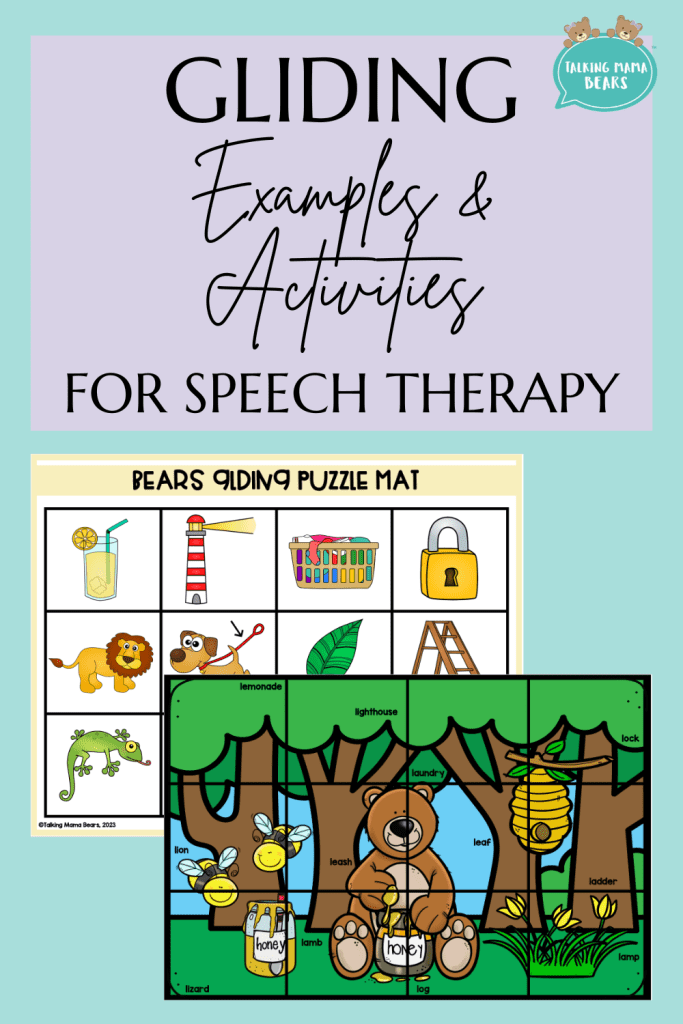

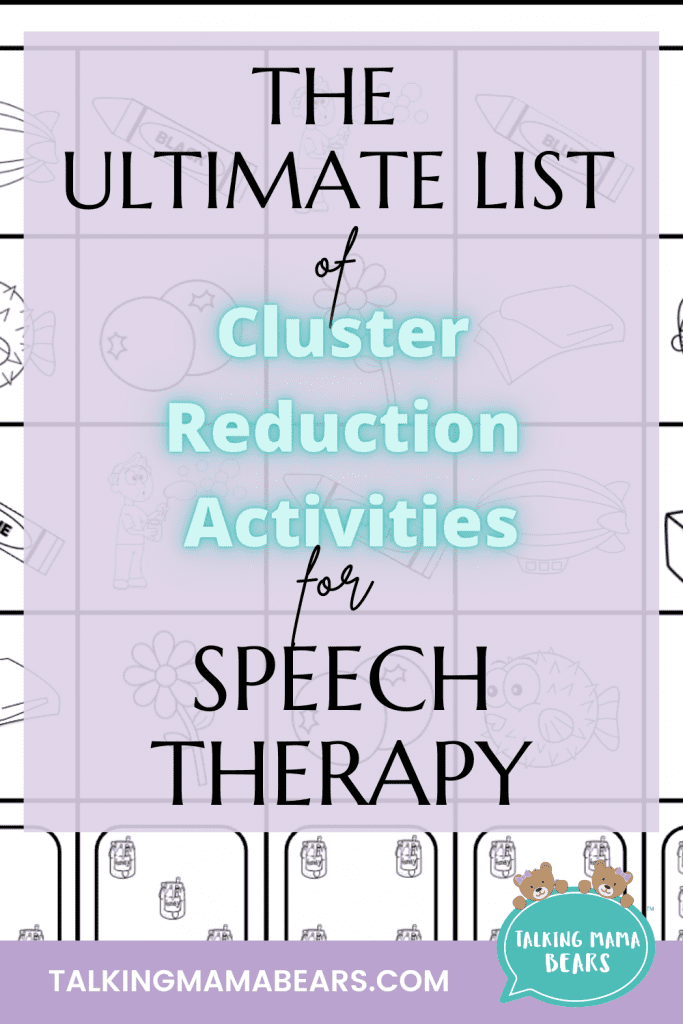
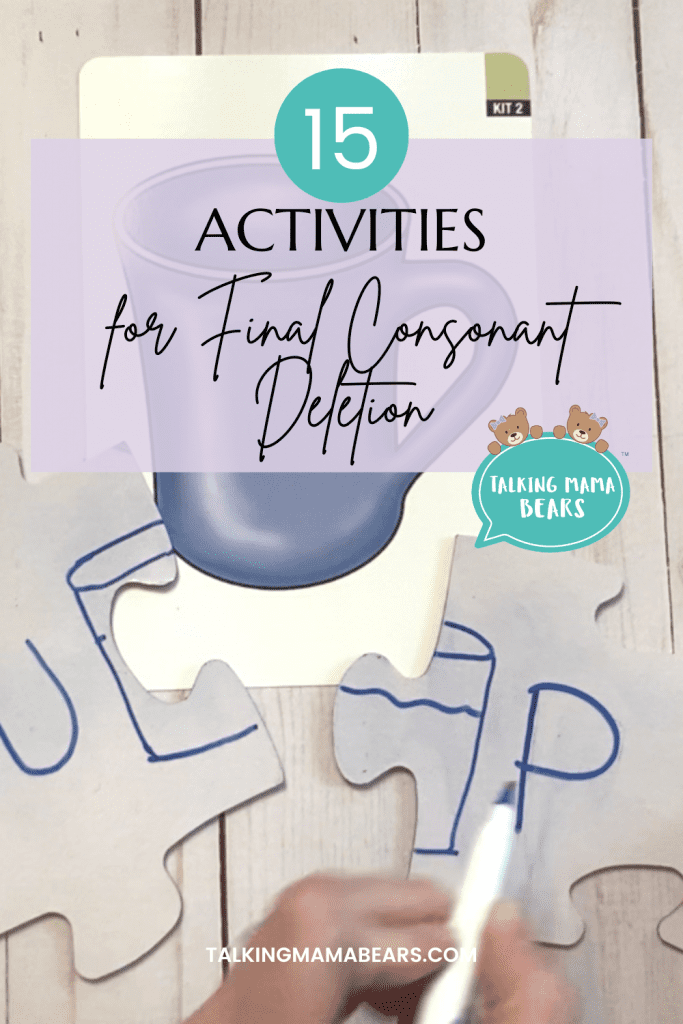
We hope you found some tips and tricks to implement during your stopping phonological sessions. Be sure to share any success you have with us on Instagram! We would love to hear from you! And don’t forgot to download your Freebie Bears Stopping Spin & Cover Game board to keep your students engaged.
Talking Mama Bears
Kate & Mandy
